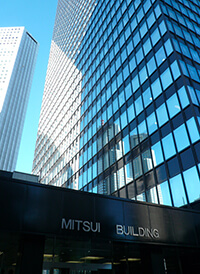2019.07.25
The law for the amendments of patent law passed the parliament on May 10, 2019 and published on May 17, 2019. The amendments will be enacted within one year but the date of enactment is yet to be determined.
The amendments introduce an on-site inspection and a new procedure for damage calculation to the Patent Law. The amended damage calculation is also introduced into the Utility Model Law and the Design Law while the on-site inspection is introduced only into the Patent Law. (You can see JPO’s review in English here.)
I. On-site inspection
Under the introduced on-site inspection system, the court can order an independent specialist to visit the site of the alleged infringer and collect the evidence relevant to the dispute at issue and make a report thereon. (Patent Law, Art. 105bis, Section 1)
Requirements for the Order
- 1) A patent infringement lawsuit is ongoing
- 2) The defendant possesses the evidence
- 3) The evidence is necessary for the proof of infringement or damage
- 4) The evidence cannot be obtained otherwise
- 5) Infringement is strongly likely
- 6) On-site inspection is reasonable in view of all the circumstances
Flow of on-site inspection
- 1) Request of an on-site inspection by a party
- 2) Hearing of the opinion of the other party
- 3) Decision by court whether to order an on-site inspection
- 4) On-site inspection by an independent specialist
- 5) Submission of an on-site inspection report by the independent specialista.
a. Drafting an on-site inspection report by the independent specialistb.
b. Sending the draft report to the other partyc.
c. Request to conceal confidential information in the draft reportd.
d. Decision by court whether to conceal or not (if the other party agrees, the draft is disclosed to the party to decide whether to conceal or not)
e. Transfer of the report to the party for potential use in the lawsuit as evidence
Comments
・Many systems have been implemented in the Patent Law and the code of Civil Procedures in the last 20 years to facilitate the plaintiff to collect evidence of infringement, i.e., obligation of the defendant to disprove the infringement allegation (Art. 102bis), court order for the submission of evidence necessary to prove infringement and/or damage (Art. 105), presumption of the method when the method of making is unknown (Art. 104), etc. However, these provisions have not been often used in lawsuits because a great discretion was given to courts which have been reluctant to exercise these provisions in the fear of losing the balance between the necessity of the patentee to prove infringement and the necessity of the defendant to protect its trade secret.
・A strong likelihood of infringement and reasonableness in view of all the circumstances are required so that an on-site inspection is ordered, and we are not sure how high the thresholds are for these requirements.
・In view of the above-described requirements, it is unlikely that the on-site inspection is ordered in an early stage of proving the infringement, it would be necessary that the infringement is almost proved but only a relatively small part is left to be proved.
・The infringement courts are expected to be more positive to the application of the on-site inspection in view of the backgrounds on which the new provision was considered to be necessary.
II. New procedure for Damage Calculation
The new procedure for damage calculation increases the damage especially when the number of infringing products made or sold by the infringer exceeds the production capacity of the patentee. Under the provision before the amendments, when the number of infringing products exceeds the production capacity of the patentee, the damage was limited by the production capacity of the patentee as long as the provision which allows the damage calculation based on the expected profit of the patentee is relied on. (Art. 102, Section 1) The calculation under the new law is as follows.
a. If the number of infringing products exceeds the production capacity of the patentee
Damage = (production capacity of the patentee) x (per unit profit of the patentee)
+ (number of infringing products – production capacity of the patentee) x royalty
(the second line was added by the amendments)
b. If the number of infringing products is within the production capacity of the patentee
Damage = (number of infringing products) x (per unit profit of the patentee)
There are three provisions in the Patent Law which provide the calculation of the damage caused by patent infringement. The above-described provision (Art. 102, Section 1) which has been amended this time, is one of them. In addition to the provision, there is a provision which allows to deem the profit of the infringer to be the damage of the patentee (Art. 102, Section 2), and a provision which allows the hypothetical royalty to be the damage (Art. 102, Section 3), which remain unchanged.
Author: Yoshitaka Sonoda
(This article is solely for general information and cannot substitute for legal advice and consultation.)








